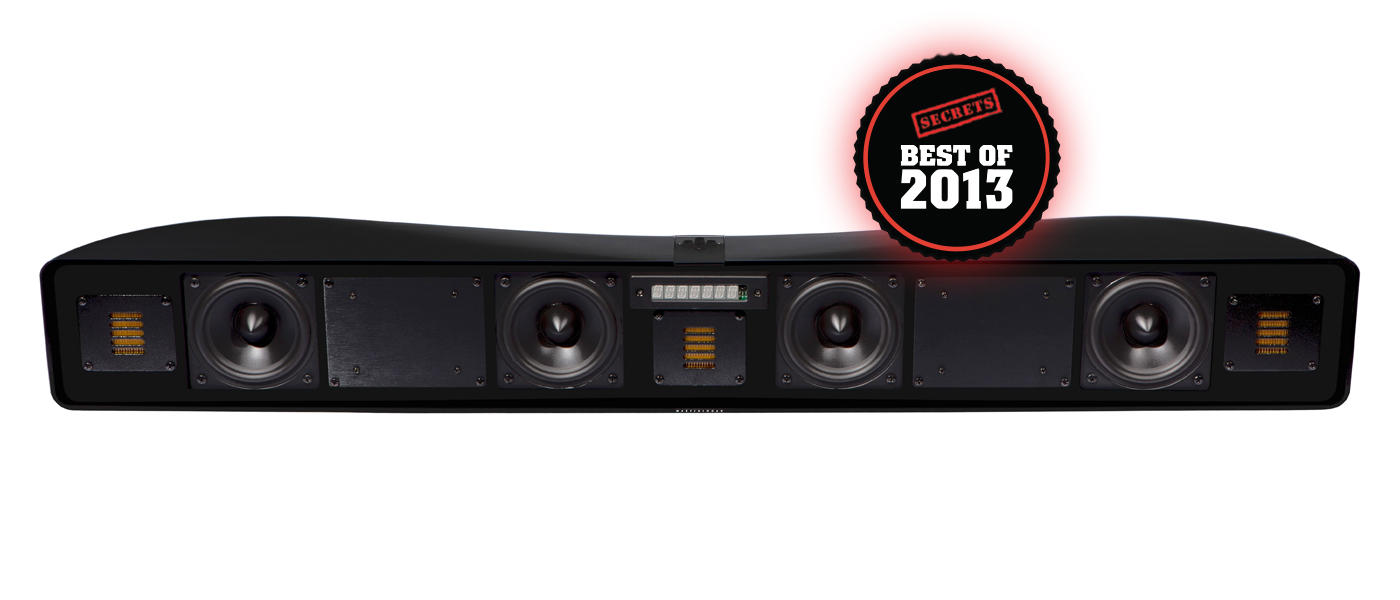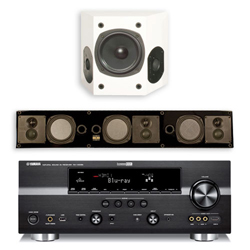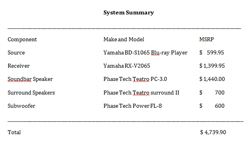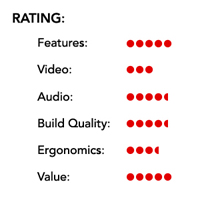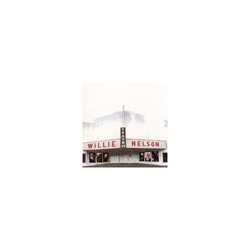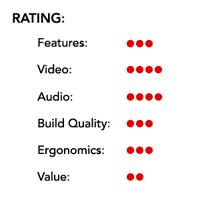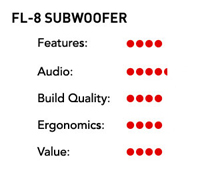Introduction and Background to the Yamaha and Phase Technology System
Welcome to the second of Secrets of Home Theater and High Fidelity System Reviews, where we choose a complete home theater setup and evaluate it for continuity, system synergy and to take some of the guesswork out of buying a complete home theater system and wondering if it all will work together seamlessly. We hope to hit all of the speed bumps so you don’t have to.
This system falls into the Medium ($2,501 – $5,000 MSRP) category, and we think systems in this category offer some of the best performance/price without sacrificing too much.
Please help us develop these reviews by posting comments at the end of this review about what you like or didn’t and what else you’d like to see in the next one. If you’re thinking it, chances are, you’re not alone. Even better yet, join us at the CAVE and post your thoughts on the Really Affordable System Forum.
System Description and Background
Yamaha, as a company, needs little introduction. Its beginnings were in the late 1800’s with reed organs and early 20th century with upright pianos, harmonicas, organs and many other musical instruments. The company has grown into a powerhouse of electronics development and is sold through many outlets, both big box and custom install.
Phase Technology, on the other hand, began as a company in 1981, and they have been an OEM manufacturer since 1955. They have an impressive list of patents and the complete history can be read here: http://www.phasetech.com/history.html. Phase Tech prides itself on building unique speakers with price-no-object performance at a price that will not scare away people before they get to audition them. One reason many people may have not heard of them is that they use a fairly limited dealer network, in fact, the nearest dealer I know of is in San Antonio, more than 90 miles away from my home in central Texas. Teatro, meaning “theater” in Italian, has become synonymous with things that either relate to live theater, music, fine dining or all three. This review focuses on the first two.
The review system consisted of the Yamaha RX-V2065 receiver, the Yamaha BD-1065 Blu-ray player, a Phase Tech Teatro PC-3.0 soundbar, two Phase Tech Teatro surround IIs, and a Phase Tech Power FL-8 subwoofer.
Price Range: Medium ($2,501 – $5,000 MSRP)
- System MSRP: $4740.00
- System Street Price: ~ $4200.00
System Rating:

Our criteria for rating systems is shown below. Click on the graphic to see the full sized version.
Yamaha RX-V2065 Receiver Introduction and Setup
Specifications: Yamaha RX-V2065 Receiver
- Design: 7.2-Channel A/V Receiver
- Amplifier Power: 130 Watts RMSx7
- Codecs: Dolby TrueHD, Dolby Digital EX/ Dolby Pro Logic IIx,DTS-HD Master Audio,DTS-ES Discrete 6.1,DTS 96/24 / DTS Neo:6
- iPod Compatibility (With Optional YDS-11)
- Bluetooth Compatibility (With Optional YBA-10)
- Sirius Satellite Radio Ready
- XM Satellite Radio Ready
- Inputs: 5 HDMI, 2 Component Video, 2 S-Video, 4 Composite Video, 2 TosLink Optical Digital, 2 Coaxial Digital
- Outputs: 2 HDMI, 1 Component Video, 2 S-Video, 1 Composite Video
- Front USB Input for Flash Memory Drives
- HDMI 3D Capable
- Zone 2 Output (Audio Only)
- Zone 3 Output (Audio Only)
- Zone 4 Output
- Pre-Out All Channels
- Dimensions: 6.75″ H x 17.1″ W x 14.3″ D
- Weight: 27.4 Pounds
- Yamaha
This is not my first experience using a Yamaha receiver, but this receiver, being the top of its consumer line was far most feature laden and powerful with a very user friendly interface. I did encounter several snags with the autosetup. It is still unclear if this was due to an incompatibility with the receiver, the nature of a speaker that has all speaker contained in the same enclosure or something else. I ended up setting the receiver up the good old fashioned way, with a measuring tape and an SPL (sound pressure level) meter.
Yamaha RX-V2065 Receiver In Use
The receiver breaks the preconceived notion of many who think that the more features that are packed into a receiver, the less the sonic chops. I personally like the V2065 because it has a very specific feature set that I need: 2 HDMI outputs (for a projector), 2 subwoofer outputs (for dual subs), high power (130X7) all at around $1000 at most retailers. See our separate review for more info.
One option that flew in under my radar was the Rhapsody music software built into this receiver and the 30-free membership (no credit card necessary; great job Yamaha!). I tried this service 6 years ago and it was not so impressive. Today, Rhapsody sports tens of thousands of songs. My father in law is on old hippie turned outlaw country from way back and we sat around all afternoon trying to stump the music system. It had every old John Prine single and Ernest Tubb B-side either of us could think of (plus a few we hadn’t heard). If this system had been included in receivers 3+ years ago it would have been even more impressive. Though the stream read most of the digital files were 128k, they seemed to be much better quality. It is possible that the receiver automatically optimizes the sound from the software before playback, as some other receivers have as options these days. The Rhapsody service is $9.99/month and is still useful if you have really eclectic taste and don’t want to pay $1 each for the MP3 (we would’ve spent over $100 that afternoon). The great part is the free trial so you can see if you like it or not.
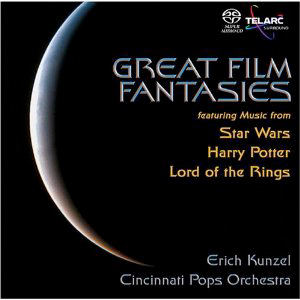
The sound of the Yamaha receiver was very good for both music and movie soundtracks. I used the Telarc Hybrid SACD of Great Film Fantasies to test both the receiver and speakers. I use Duel of the Fates from Episode I: The Phantom Menace to test system cohesion and the ability of receivers and speakers to play loudly without breaking up. This system sounded huge. I have a large living room (6000 cu/ft.) and this receiver absolutely fills it up with sound.
This CD, which bears the same name as the soundbar under review, is encoded in HDCD and makes for a very detailed listening experience with tons of subtle sounds, some very deliberate and some seem to be artifact associated with close microphone placement. The Mexican influence on the sombresomber “I Never Cared for You” is apparent, as is Nelson’s gravelly, sometimes nasal but always very distinctive voice. On the more up tempo (but still dark) “Three Days”, Willie’s back up singers mesh so well that their voices are almost lost in each others, as if the song is being performed by one person.
I watched the entire series of Mad Men Season 3 on this system. The blu-ray is mastered in DTS-HD Master Audio and the intro that plays before each episode is 5 seconds of the best demo material one can find for a system like this (great right to left pans with high, middle and low frequencies). The episodes themselves are fairly tame in the audio department but they are a fantastic test for dialogue, especially low level, subtle, almost under the breath dialogue. This system pulls it off well considering it is a soundbar in a very large room.

I recently viewed The Hurt Locker on blu-ray and it lived up to its technological reputation. The bullets whizzing past into the surrounds and the helicopters panning from center front, the left, to surround left were executed with stunning realism. And again I was impressed with the huge soundfield that was thrown by the receiver and speakers. I have owned THX Ultra rated receivers that didn’t sound this big. The receiver did have subtle nuance in quieter passages, though sometimes quiet voices were barely intelligible, however, I was consistently impressed with how big it sounded when the material called for it. I will say that I tried the system minus the surrounds and it was a bit flat by comparison. The surrounds are absolutely necessary to create that large scale movie feel, especially in larger rooms. If my own Denon 2309 ever quits I would think seriously about going with this receiver as a replacement.
I did have some HDMI handshake problems with my Sony SXRD rear projection TV. These type of issues are hard to troubleshoot, especially when everything is running through an HDMI switching receiver. The problem was resolved immediately when I upgraded my display to a Samsung 58B650 and never resurfaced again. It is important to note that my older Denon receiver ran fine with my older TV. I think the lesson learned is that older HDMI gear can be finicky with new HDMI gear, don’t automatically blame any one component, or the HDMI cable.
Another minor problem I encountered is that sometimes when a new source is selected on the receiver it will not immediately pickup the sound stream and video only displays. This was always able to be remedied by changing the source and then changing it back or telling the source to reset and resend the signal. For example, it occurred most often on my PS3 with music burned to the hard drive. I would get the display title of the song but no music, usually starting the song over once or twice brought the audio back. This was a minor issue but worth mentioning.
Yamaha BD-S1065 Blu-ray Introduction and Setup
Specifications : Yamaha BD-S1065 Blu-ray Player
- Design: Blu-ray Player
- Supported Formats: BD-Video, BD-R (BD Video), BD-RE (BD-Video), DVD-Video, DVD-R/-RW (DVD-Video, DVD-VR, AVCHD), DVD+R/+RW (+VR, AVCHD), CD and CD-R/-RW (CD-DA, JPEG)
- Supported Audio: Bitstream and Decoding Capability for Dolby Digital, Dolby Digital+, Dolby TrueHD, DTS, DTS-HD, DTS-HD Master Audio, LPCM.
- Supported Video Resolutions via HDMI: 480p (576p), 720p, 1080i,1080p 60Hz, 1080p 24Hz
- Dimensions: 3.75″ H x 17.1″ W x 12.5″ D
- Weight: 9.9 Pounds
- MSRP: $599.95 USA
- Yamaha
Setup on the BD player wasn’t as simple. The unit wouldn’t play BD live discs because it does not have sufficient internal memory to do so. A call to Yamaha customer service quickly revealed that I needed a firmware update which, unfortunately, cannot be completed via the Ethernet jack on the back of the player (can we please enable this for all future internet-ready devices?). I went to the Yamaha page and downloaded the update to a thumb drive which was inserted into the player. After the update the player still wouldn’t play BD live because most of the space on the drive was taken up by the firmware.
Yamaha BD-S1065 Blu-ray Player In Use
The Yamaha blu-ray player had pretty good audio and video performance, see the SECRETS review published in March for more information. This player was not very user friendly, however. The player took several minutes to get up and playing a disc, this compared to under a minute for my PS3. After looking into some forums I found that it is necessary to go into the setup menu and enable the Quickstart function to speed up loading times, though it does use considerably more power when in standby. This is something that should be enabled by default. After reaching the main menu of the blu-ray disc I found the remote to be not very responsive. Several button presses were required to move the cursor in many instances. In one instance I reached an area of the BD-live menu that locked up and required me to restart the machine completely. Overall the interface was glitchy and generally hard to use. I hope that Yamaha will subject the next iteration of this player to extensive beta testing and tweaking to smooth out the operation. Though the player turned in reasonably good video and audio performance, it seemed not to be consistent with the quality of the interface. The price of $599 also takes away from the value rating of this player.
Phase Technology Teatro PC-3.0 Introduction and Setup
Specifications : Phase Technology Teatro PC-3.0, Phase Technology Teatro Surround II and Phase Technology Power FL-8
- Phase Technology Teatro PC-3.0
- Design: Sound Bar, Ported
- Drivers: Three 1″ Fabric Dome Tweeters, Three 1.5″ Fabric Dome Midrange, Three 5.25 Fiberglass Woofers
- MFR: 52 Hz – 22 kHz ± 3 dB
- Sensitivity: 89 dB
- Nominal Impedance: 4 Ohms
- Dimensions: 7″ H x 40″ W x 4.5″ D
- Weight: 25 Pounds
- Finish: Gloss Black
- Phase Technology Teatro Surround II
- Design: Wall-Mount, Sealed Enclosure
- Drivers: Two 1″ Fabric Dome Tweeters, Two 5.25″ Mid/Bass
- Sensitivity: 90 dB
- Nominal Impedance: 8 Ohms
- Maximum Amplifier Power: 120 Watts
- Dimensions: 9.25″ H x 11″ W x 5″ D
- Weight: 8 Pounds/each
- Finish: Matte White or Matte Black
- Phase Technology Power FL-8
- Design: Subwoofer, Sealed Enclosure
- Driver: 8″ Polypropylene, Mineral Filled
- Amplifier: 250 Watts RMS
- MFR: 32 Hz – 150 Hz
- Gain control Phase Switch
- Variable Crossover
- Line/Level and LFE inputs
- Dimensions: 14.6″ H x 11.1″ W x 16.75″ D
- Weight: 35 Pounds
- Finish Black Rosewood Laminate
- Phase Technology
Setup was relatively straightforward. I should say that my room is not optimized for a soundbar as my display wall has built-in bookshelves on it and doorways to either side that prohibit reflected sound from bouncing back to the user. The soundbar comes with wall mounting brackets which I did not use as it didn’t fit my setup. Hooking up the L/C/R amplifier channels to the soundbar and setting it in front of my display was all it took. The soundbar does angle up slightly so preferably mount it below ear level. The surrounds use keyhole mounting slots and are also very straightforward, just a red and black speaker cable to each and you’re done. I used banana-type connectors for the soundbar but straight wire connectors as there wasn’t enough room between the flush mount speaker and the connectors on the back of the surrounds. The sub was a simple LFE from the receiver “sub out” to the “LFE” input and plug it into the wall. I used my standard position of in the front corner but out from the wall as this is the only place in my living room to accommodate a sub with 1 yr old curious fingers.
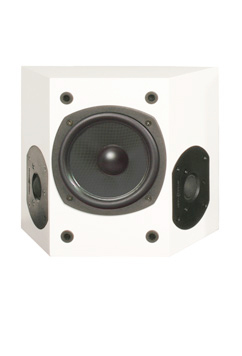
Phase Technology Speakers In Use
Please also refer to the “receiver section” as the sound of the receiver and soundbar are very closely related. In all I was very happy with the performance of this soundbar. Having said that, this soundbar’s only drawback was dialogue intelligibility at low levels. I highly recommend using the receiver setup menu to boost the center channel level to +3dB and increasing the frequency level around 250Hz and this will help quite a bit. I should mention that movie soundtracks and music were completely unaffected by the problem, only movie and TV dialogue. Again, not a deal breaker with this workaround in place. After speaking with Phase Tech regarding this issue I was informed that my setup was not ideal. This soundbar is designed to be mounted on a flat wall underneath a flat panel and uses the wall and uses the wall for boundary reinforcement (boosting the lower registers) and any deviation from this can decrease the sound quality as I found out during testing.
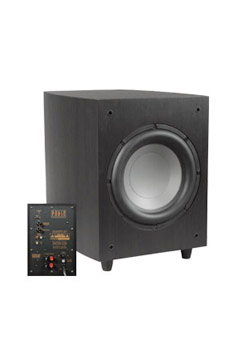
The FL-8 subwoofer is the little sub that could. It measures ~14 inches cubed, has all the options of much more expensive subs. This is a sealed device which gives tight accurate bass that is never boomy and doesn’t hang around too long, in fact, the volume at around 32 Hz will rattle your China cabinet. If my test tone disc is any indication, in my room this sub plays down to the around 28 Hz with good volume. So much for the notion that sealed boxes can’t hit the low notes. Again, my large room usually pushes speakers to their limit but this sub, like the soundbar and surrounds, played everything I threw at it from intense action movie explosions to bass lines from Beastie Boys songs exactly as it was intended to and didn’t seem to mind when I called on it for the really big sound. As its not an overly powerful sub I expect that the driver is a very high efficiency design and that the box is tuned to the driver. I should also mention that this sub mated very well with the soundbar, as it should. The receiver handled all the bass management but there was very little frequency level drop though out the spectrum (except where noted in the human male voice, but this wasn’t a problem with the sub match the soundbar as much as the soundbar being able to cover its own bases) when I set the crossover point to 80 Hz, everything meshed very well with very slight localization of the sub in the room, due to the higher crossover point demanded by the soundbar’s limited low end response.
Conclusions
This system is not cheap, nor does it compromise in very many areas. This system uses a top of the line receiver and soundbar. A system could be better, but not using only a receiver and a soundbar (plus sub and surrounds). I would say this is almost a perfect system for those with imperfect viewing rooms. One thing that cannot be stressed enough is that the surrounds are absolutely essential for any surround envelopment in a room that does not have a rectangular shape, with the soundbar mounted on a flat wall. This is the only soundbar I’ve ever heard that can be recommended for medium to large sized rooms, with the included receiver or another comparably powered unit. Overall this system works very well together for its intended purpose, which is lifelike home theater and music in a living room environment.


